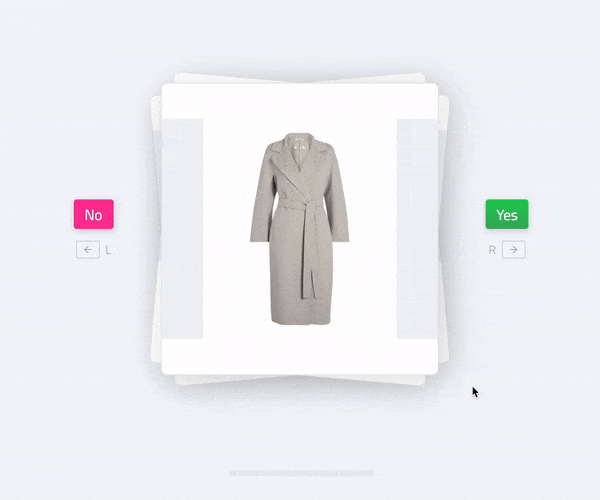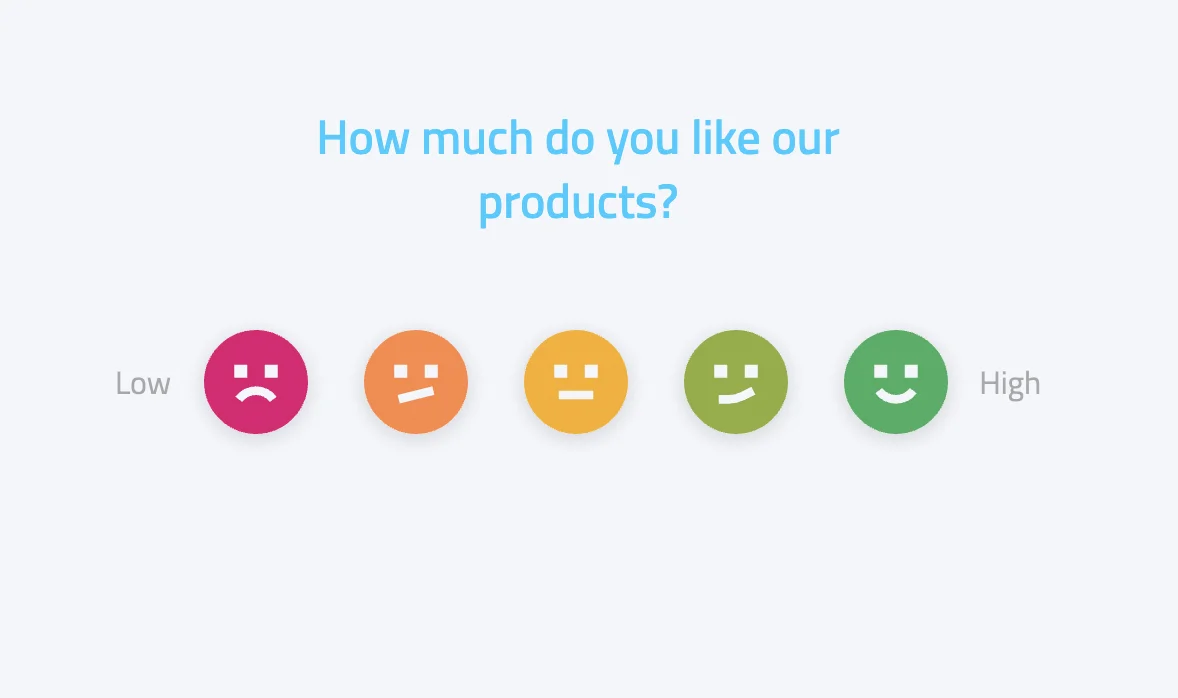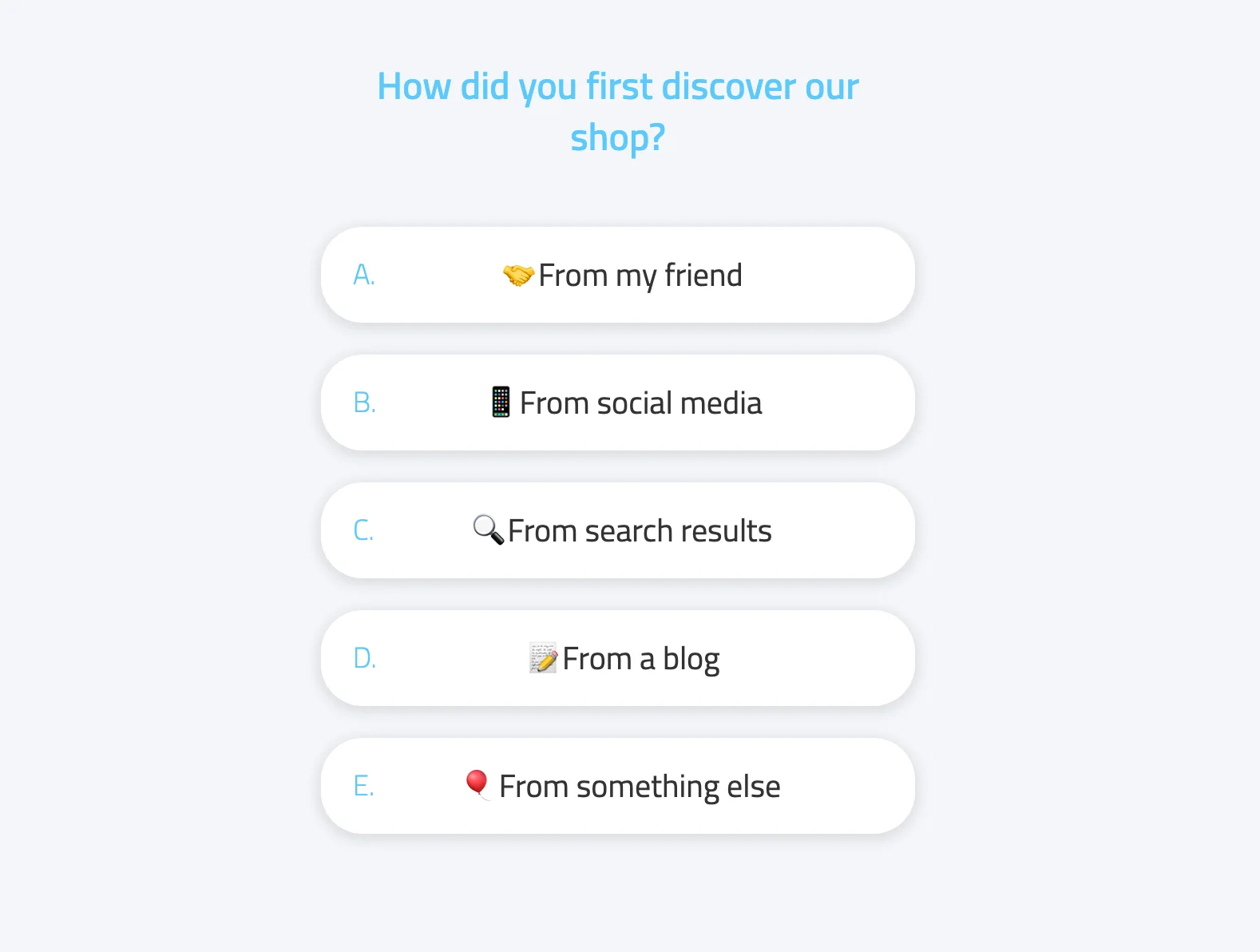How to choose a proper rating scale for your business
Aug 11, 2023
~8 min read
Even if you are new to the business, there is no need to explain the benefits of customer satisfaction. All the numbers aside, when starting a business, customer feedback may be the most crucial thing you want to measure. It can be easier to do with using a variety of rating scale surveys. Here are a few steps to find out which one is the best for your business.
What is a rating scale?
A rating scale is a set of closed-ended questions - ones where you have to choose from the given options and usually don’t have to expand your answer. It could be either “yes/no” questions or “multiple choice”. These formats can be combined in a set to gather more extensive information.
Rating scales are spread especially in the e-commerce area due to convenience in using. They are designed to help with gathering essential information from a customer, such as post-purchase evaluation, customer service satisfaction, product feedback, etc.

Determine the purpose of your research
The necessity of using a rating scale depends on the purpose of your research. Why do you create an online survey? Have you launched a new product line and want to get feedback on your products? Or are you considering an update for the interface of your service?
Do a market research
If you are just about to launch a new range of products or a new service app, market research will be an essential thing to do. The information gained during market research helps to develop a strategy and choose the right channels of communication.
Very often, small businesses and start-ups do not have enough budget to do large-scale quantitative research. In this case, you can do qualitative surveys of the target audience.
CSAT (Customer Satisfaction Score)
Customer Satisfaction Score is, perhaps, the most popular indicator. Its essence is to get a precise evaluation of the event.
Some experts believe that this metric does not reflect customer loyalty and the questions are too specific. Yet, this is a very good tool if you are only interested in measuring the quality of the product support line, for example.
CES (Customer Effort Score)
CES is usually measured to find out how easy and simple it was for the client to find a solution to their problem. The metric shows how comfortable and easy the client felt in general, but does not evaluate his communication experience.
Do a churn survey
In a perfect world, your business would have a 0% churn rate. Unfortunately, this is not possible in our imperfect reality. You can profit out of dissatisfied customers too. Ask them a few questions, why they decided to cancel a subscription or to have a refund. It will help you to adjust your business strategy according to the market tendencies and improve customer satisfaction.
Choose the right rating scale
Generally speaking, there are 4 types of rating scales: Nominal, Ordinal, Interval, and Ratio. Each one represents its level of measurement.
Nominal scales include only labels and categories you should choose from. A respondent is only able to name one category. There is no option for them to grade labels by quality or any other factor.
The most frequent examples of Nominal scale questions are: “Do you like this product?”; “What brand do you prefer from these three?”. The most popular format among nominal scales is a “Yes/No” question one.
Ordinal scales add an opportunity for prioritization to the variables. The respondent can arrange the products in a certain order according to the main parameter set (for example, the design or quality of the product). The most popular among ordinal scales are Pain Rating 1 to 10 scale.
Interval scales present the 3rd type of measurement. At first glance, it does not differ from the ordinal template. Yet, when sorting points by priority in the ordinal scale, we cannot determine how far the first place has broken away from the second. The interval scale initially sets equal intervals between each point. The most popular among interval scales is the Likert scale created to measure customer satisfaction.
Ratio scales are the 4th type of measurement. It takes into account not only the name, the order, and the intervals between one or another degree of satisfaction, but also counts 0 as a legit variable. It is not used that much in customer satisfaction surveys. The most popular ratio scales are the multiple answers, especially ones with a range gap.
Yes/No questions
Yes/No scale is a Nominal scale type of survey that allows the respondent to quickly give feedback on satisfaction with the product. The format is easily applied to a post-purchase survey.
Likert scale
The Likert scale is one of the most popular interval rating scales. You can use any Likert scale template you like - from 1 to 10 points. The most widely used Likert scale is 5 point one when it comes to any satisfaction score because of its versatility and the ability to choose a “Neutral” answer.
There is also a 6 point Likert scale, which uses degrees of assessment of a particular statement. You can find it in psychological tests.
NPS (Net Promoter Score)
What does NPS stand for? NPS is an ordinal 1-10 rating scale, which usually uses only one question: “Would you recommend our service/store/product to your friends?”. NPS score is an essential metric to assess post-purchase behavior.
The results of the scale are interpreted as follows: respondents from 1 to 6 are considered potential detractors, 7 and 8 would have a passive position, and 9 and 10 are potential promoters. To calculate the consumer loyalty index, you need to subtract the percentage of detractors from the percentage of loyal customers.
Best practices to measure customer experience
Yes/No swipe cards

You want to include this tool in your post-purchase evaluation survey as well as the general CSAT score. The advantage of this format is that it is associated with the “Tinder” entertaining dating app, and does not require much thought from the respondent. This feature allows to increase online survey response rates and make customers' experiences more engaging and fun in general.
Likert scale

The Likert scale is a must when it comes to a post-purchase evaluation survey or CES evaluation. Due to a wide range of templates, it gives you an opportunity to learn as much information as you want.
You can use numbers, colored or neutral smiles, or stars evaluation. 2 point template (usually presented with red and green smiles) is somewhat similar to the “Yes/No” question format and can be used when scoring the support service satisfaction. 3 point template adds the “Neutral” point and 5 point increases the range of satisfaction.
Multiple answers choice

When it comes to evaluating multiple indicators in service or quality, such a format becomes very effective. You offer a choice of several options at once, which you can later supplement with a Likert scale so that they can evaluate each of them in more detail. Choosing multiple answers allows the client not to puzzle over the choice if his experience was positive (or negative) with several aspects of your service or product at once.
1-10 scale (NPS)
The 1 to 10 scale is applied to the NPS indicator measurement. It is an essential metric to assess post-purchase behavior. NPS rate will help you not only to be aware of the reputation of your business in the market but also to adjust your strategy if the percentage of detractors is too large.
To calculate the NPS index, you do not need to do a huge amount of work. This is a huge plus of metrics. A simple 1-10 rating scale is used mainly for measuring. The visible advantage of a 1-10 rating scale is that a customer is presented with a wide selection choice while you do not have to puzzle over interpretation. However, it is very important to come up with the correct wording of the question - it should be a succinct question that does not imply a yes or no answer.
Summary
Before you choose a rating scale for your business, it is most important to determine your purpose. With a variety of rating scales, there are many practices to help you collect feedback from your customers. Use ones that best match your target.